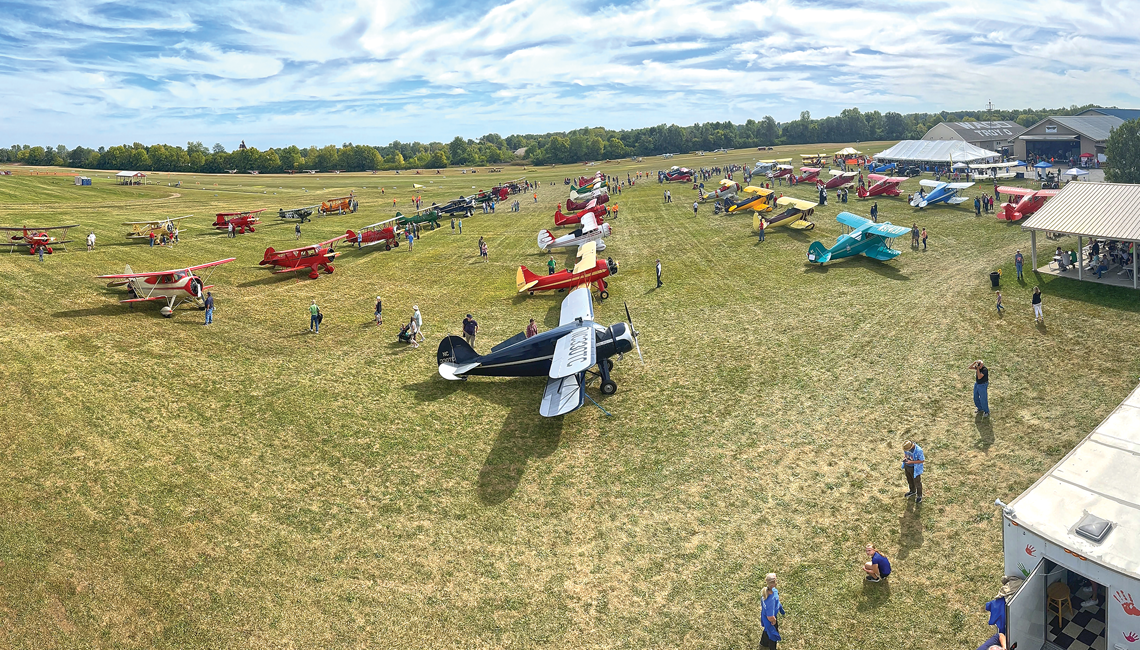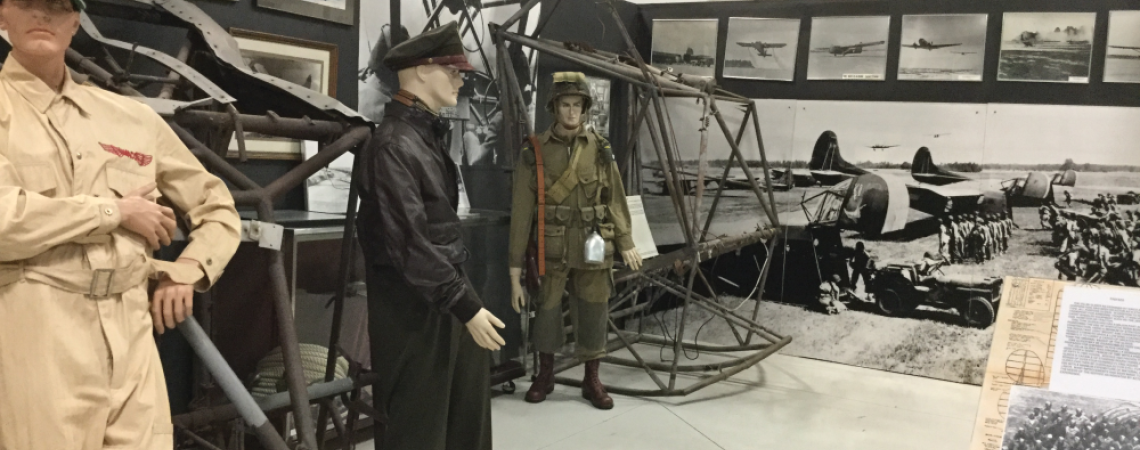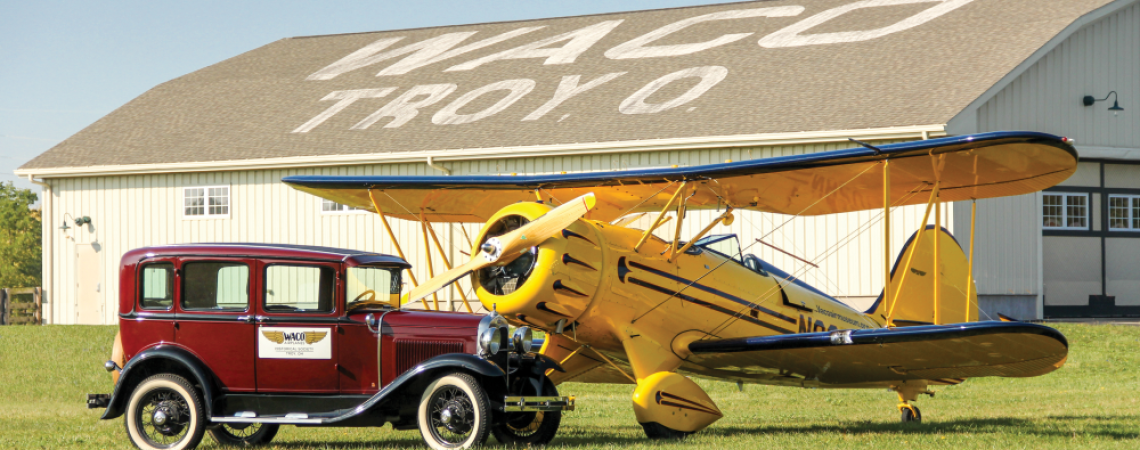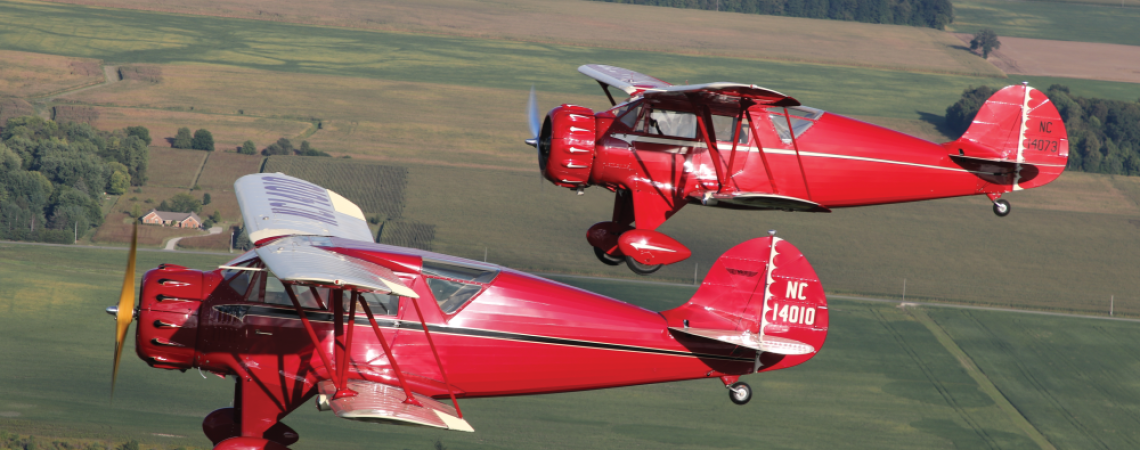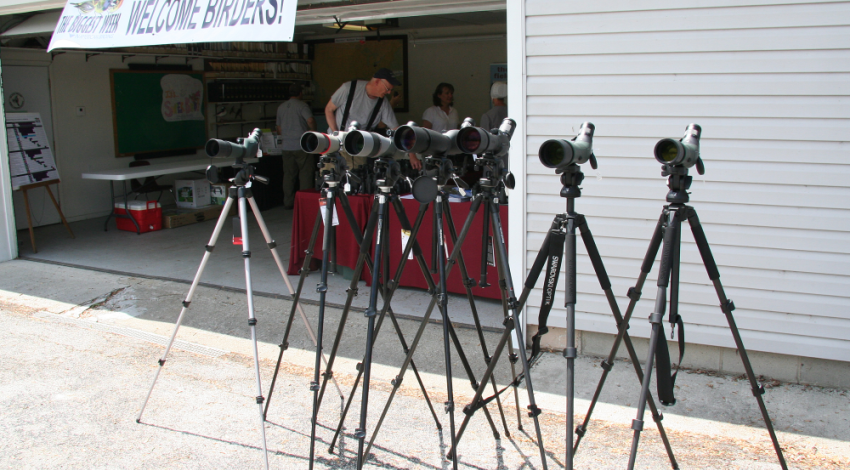Vintage aircraft are a common sight in the sky above and along County Road 25A at the south edge of Troy in Miami County — especially during late September, when the WACO Air Museum and Learning Center hosts its annual fly-in.
The center’s executive director, Nancy Royer, says nearly 100 “birds” flew in to last year’s 100th anniversary event, and she hopes to attract similar numbers at this year’s show Sept. 20 through 22. Events start at 9 a.m. each day.
Plans call for flyovers, displays, entertainment, a candy drop, vintage car show, and food trucks. Like other select weekends during the spring, summer, and fall, pilots will be offering flights (for a fee) in their open-cockpit biplanes.
The first museum opened in downtown Troy in 1980, with the current site opening in 1997.
“The fly-in gives us a chance to show off our facility,” Royer says. “It is here that people can walk through the history of Troy and Miami County, which were at the forefront of the aviation history.”
WACO (Weaver Aircraft Company) in Troy was the largest manufacturer of biplanes in the country during the late 1920s and early 1930s. Buck Weaver, a civilian who instructed military pilots in Texas during World War I, and friends Clayton Brukner, Sam Junkin, and Charlie Meyers founded the company in 1920.
Their first design, dubbed “The Cootie,” holds a place of honor in the museum. Brian Meyer, a member of the WACO Historical Society, built a flying replica of the aircraft — relying entirely on photographs since none of the original models remained.
Between 1925 and 1927, the company’s owners continued to improve their designs. Many of the 250 WACO Model 9s manufactured in that time were used to haul mail from place to place. More success came with the WACO Model 10.
According to Royer, it was the choice of barnstormer pilots in the 1930s and became known as a new pilot’s best friend.
Though the company failed to secure a contract to produce military trainer planes, its UPF-7 was chosen by Civilian Pilot Training Schools and produced 600 of them for that purpose. WACO did win a contract to build gliders after the Army Air Corps decided it needed aircraft to quickly move heavy loads of military personnel, jeeps, and other equipment into battlefield locations, and more than a thousand were built in Troy. “WACO’s gliders flew in 28 countries,” Royer says.
Post-war years were not kind to the company, and the last plane rolled off the assembly line in 1947. However, WACO continued for another 15 years doing metalwork, handling subcontractor duties, and building products including turrets, bomb dollies, and log splitters.
The company occupied nine buildings and boasted a workforce of 2,000 in its heyday. Former employees and local citizens wanted to preserve and honor the area’s contribution to aviation, and established the WACO Historical Society in 1979.
The first museum opened in the downtown area the following year with the current site opening in 1997. Today, along with its 2,400-foot grass airstrip reminiscent of the 1930s, the site has two large hangars full of vintage aircraft — including “Sunni,” a classic biplane representative of the Golden Age of Aviation. A small theater shows World War II gliders in action and a learning center hosts various aviation-related camps and youth programs.
The museum, located at 1865 S. County Road 25A, Troy, is open Monday, Tuesday, Thursday, and Friday, 9 a.m. to 3 p.m. and Saturday and Sunday, noon to 5 p.m. There is an admission charge. Check the website at WACOAirMuseum.org or call 937-335-9226 for more information.
